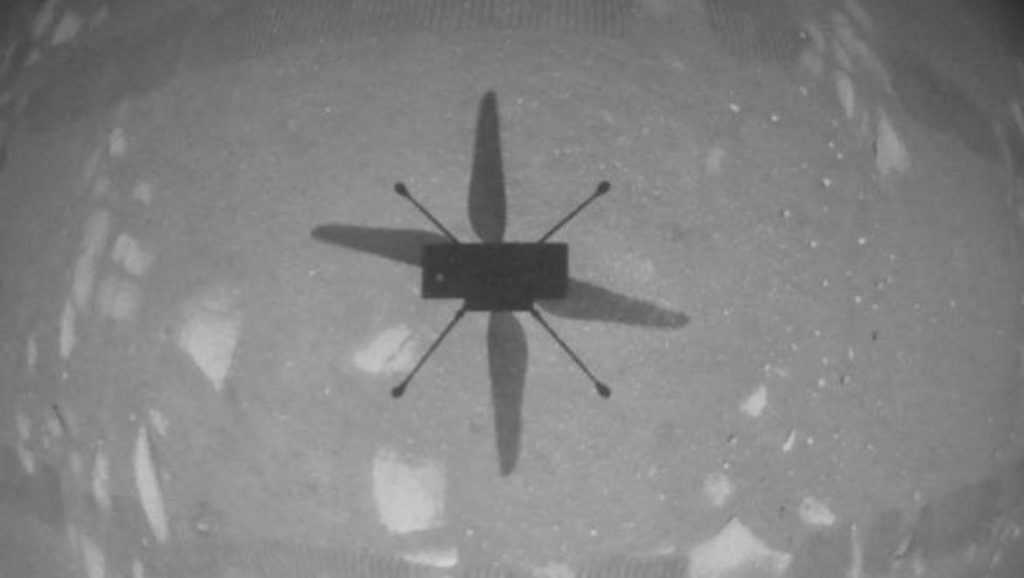
NASA’s Ingenuity helicopter has successfully completed its second flight test on the surface of Mars, flying higher and farther than it did during its first test earlier this week.
Ingenuity’s second flight, which occurred on Thursday, saw it fly five metres above the Martian surface over Jezero Crater, an area now dubbed Wright Brothers Field.
From there, the helicopter hovered, before turning 5 degrees in order to generate enough thrust from its counter-rotating overhead rotors to move two metres to its side.
The flight lasted 51.9 seconds in total, almost 12 seconds longer than its inaugural test flight.
On Monday, NASA announced it had successfully completed its first aircraft flight on a foreign planet when Ingenuity took to Martian skies for nearly 40 seconds.
For its maiden flight, Ingenuity was programmed to simply take off, soar approximately 3m above the Martian ground, hover for around 30 seconds, pivot 96 degrees, and land.
Ingenuity is a solar-powered rotorcraft vehicle that boasts twin propellers, a metallic body, four legs, and weighs just under two kilograms.
It was sent aboard NASA’s Perseverance Mars rover in February to complete one mission: prove that it could fly in Mars’ atmosphere, which varies significantly from that of Earth.
While Mars has much less gravitational pull than Earth, its atmosphere is just 1 per cent as dense, making it difficult to generate lift.
As such, the engineers of Ingenuity gave the aircraft four-foot long rotor blades that spin at higher speeds than would be required on Earth.
While Ingenuity’s design was tested in simulations back on Earth, Monday saw the real test of whether or not engineers had succeeded in accommodating the challenge of Mars’ atmosphere in generating lift, while Thursday’s test built upon Monday’s success.
“It sounds simple, but there are many unknowns regarding how to fly a helicopter on Mars,” said Håvard Grip, Ingenuity’s chief pilot at NASA’s Jet Propulsion Laboratory (JPL).
“That’s why we’re here – to make these unknowns known.”
Ingenuity chief engineer Bob Balaram said the data received so far “tells us that the flight met expectations” and that NASA’s computer modeling for operation of a remotely controlled aerial vehicle was accurate.
“We have two flights of Mars under our belts, which means that there is still a lot to learn during this month of Ingenuity,” he said.
Following the two successful test flights, NASA’s Ingenuity team stated that future flight tests will continue to test the limits of the aircraft, with each test pushing the device to go higher and further for longer.
Despite performing and landing in great shape, much like its first flight, Ingenuity’s career may be short-lived, according to NASA’s Ingenuity project manager MiMi Aung.
NASA has confirmed that it intends to push the rotorcraft to its upper physical limits, testing the extent of its speed, height and range limits.
“We will be pushing the envelope,” Aung said. “And, ultimately, we expect the helicopter will meet its limits.”











